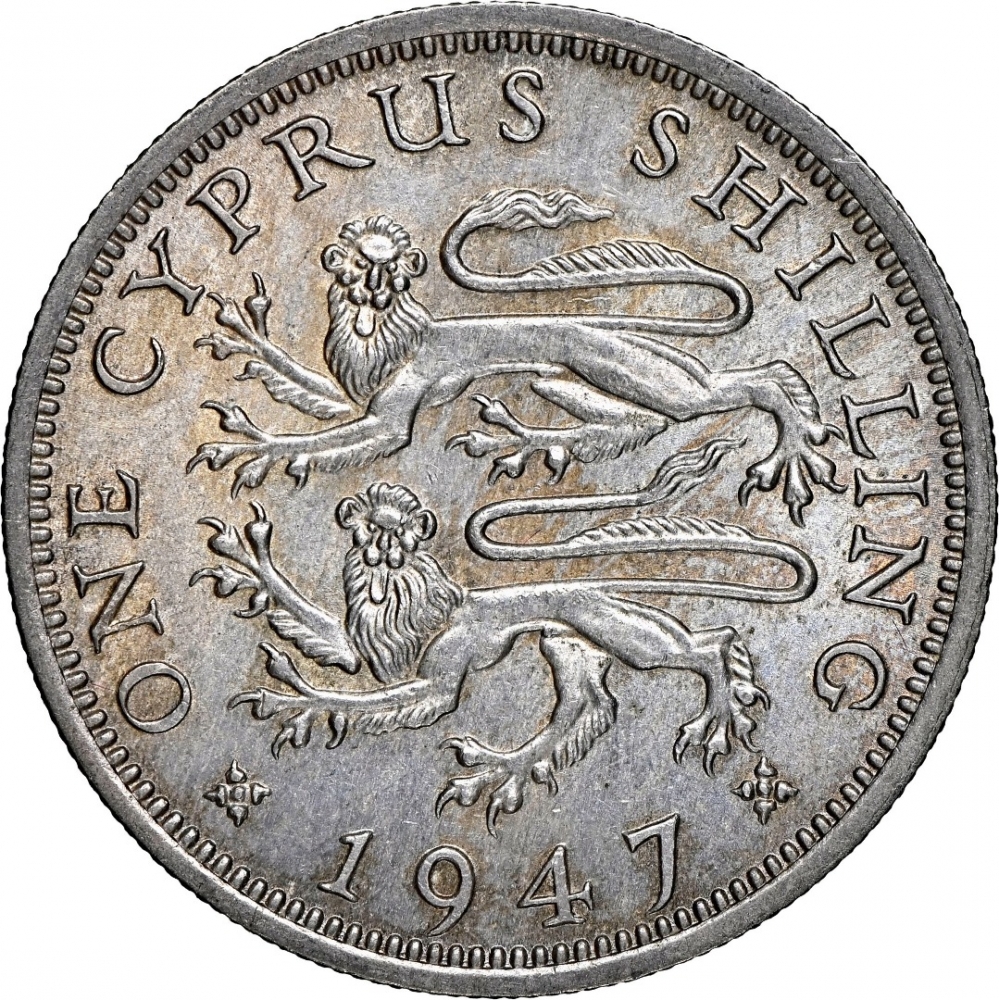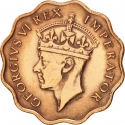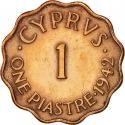You are about to finish your registration. Please check your mailbox (including spam folder). There should be a letter with a confirmation link. Check setting to make sure that your e-mail address is correct.
Send letter againDescription
The government of Cyprus was ceded by the Ottoman Empire to Britain by the Anglo-Turkish Convention of 4 June 1878 by which Turkey received an annual payment equal to what it would have received in taxation. The coinage of the island was based on the Turkish copper piastre and the British elected to continue this system, introducing bronze coins of 1 piastre, 1/2 piastre and 1/4 piastre in 1879.
George VI (1895–1952) was King of the United Kingdom and the Dominions of the British Commonwealth from 11 December 1936 until his death. He was the last Emperor of India and the first Head of the Commonwealth.
As the second son of King George V, he was not expected to inherit the throne and spent his early life in the shadow of his elder brother, Edward. George's elder brother ascended the throne as Edward VIII upon the death of their father in 1936. However, later that year Edward revealed his desire to marry divorced American socialite Wallis Simpson. British Prime Minister Stanley Baldwin advised Edward that for political and religious reasons he could not marry a divorced woman and remain king. Edward abdicated in order to marry, and George ascended the throne as the third monarch of the House of Windsor.
Obverse

|
Crowned bust of King George VI, left, wearing the Tudor Crown, legend around. GEORGIVS VI DEI GRA. REX ET IND. IMP. |
|---|---|
Reverse

|
Depicts two stylized rampant lions left surrounded by denomination and date below. ONE CYPRUS SHILLING |
| Edge |
1 Shilling
KM# 27
Characteristics
| Material | Cupronickel |
| Weight | 5.63 g |
| Diameter | 23.7 mm |
| Thickness | 1.8 mm |
| Shape |
|
| Alignment | Medal |
| Mint |
Royal Mint
|



